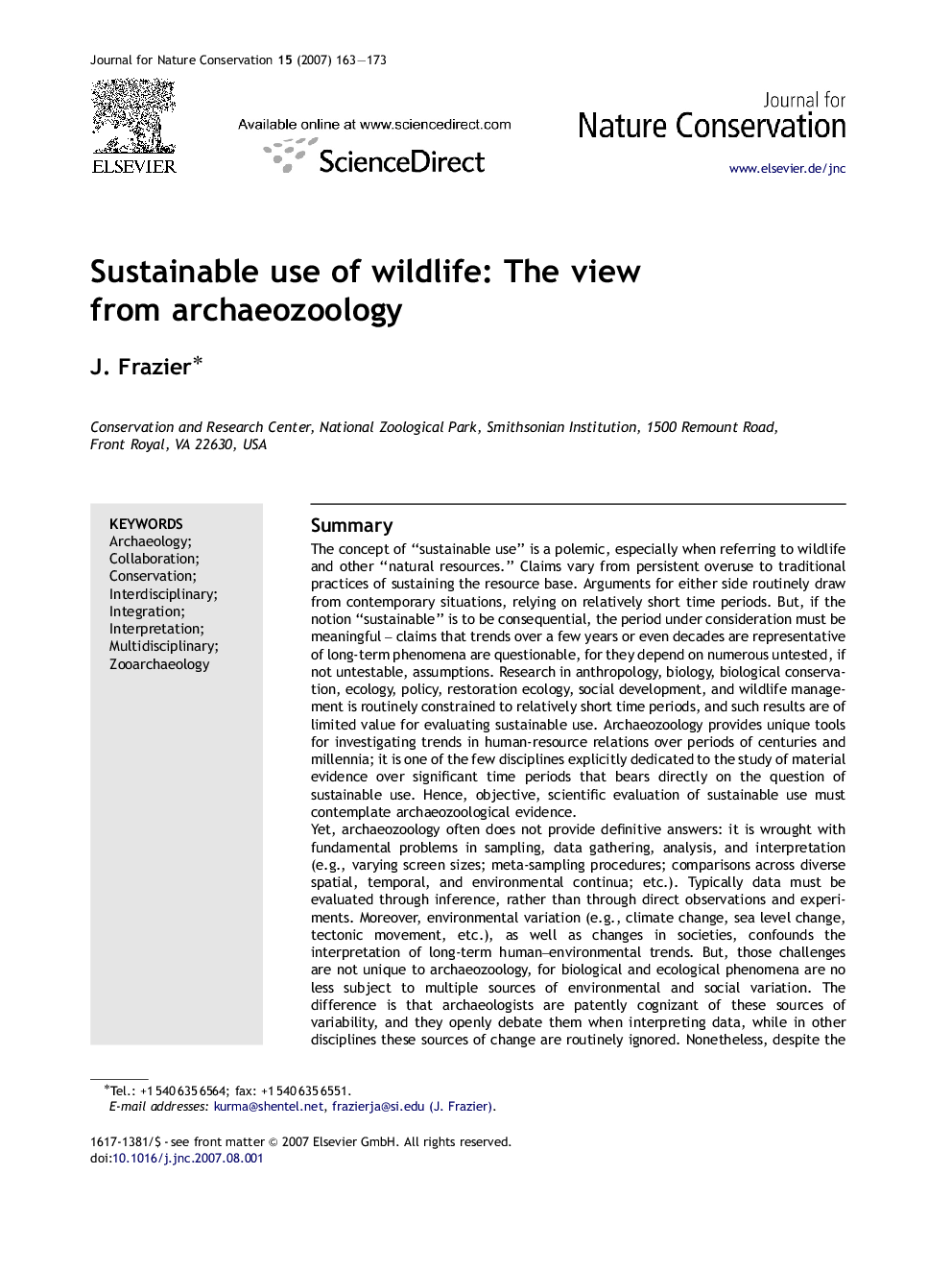| کد مقاله | کد نشریه | سال انتشار | مقاله انگلیسی | نسخه تمام متن |
|---|---|---|---|---|
| 4400194 | 1306920 | 2007 | 11 صفحه PDF | دانلود رایگان |

SummaryThe concept of “sustainable use” is a polemic, especially when referring to wildlife and other “natural resources.” Claims vary from persistent overuse to traditional practices of sustaining the resource base. Arguments for either side routinely draw from contemporary situations, relying on relatively short time periods. But, if the notion “sustainable” is to be consequential, the period under consideration must be meaningful – claims that trends over a few years or even decades are representative of long-term phenomena are questionable, for they depend on numerous untested, if not untestable, assumptions. Research in anthropology, biology, biological conservation, ecology, policy, restoration ecology, social development, and wildlife management is routinely constrained to relatively short time periods, and such results are of limited value for evaluating sustainable use. Archaeozoology provides unique tools for investigating trends in human-resource relations over periods of centuries and millennia; it is one of the few disciplines explicitly dedicated to the study of material evidence over significant time periods that bears directly on the question of sustainable use. Hence, objective, scientific evaluation of sustainable use must contemplate archaeozoological evidence.Yet, archaeozoology often does not provide definitive answers: it is wrought with fundamental problems in sampling, data gathering, analysis, and interpretation (e.g., varying screen sizes; meta-sampling procedures; comparisons across diverse spatial, temporal, and environmental continua; etc.). Typically data must be evaluated through inference, rather than through direct observations and experiments. Moreover, environmental variation (e.g., climate change, sea level change, tectonic movement, etc.), as well as changes in societies, confounds the interpretation of long-term human–environmental trends. But, those challenges are not unique to archaeozoology, for biological and ecological phenomena are no less subject to multiple sources of environmental and social variation. The difference is that archaeologists are patently cognizant of these sources of variability, and they openly debate them when interpreting data, while in other disciplines these sources of change are routinely ignored. Nonetheless, despite the unique relevance of their work, few archaeozoologists have ventured outside their discipline to engage natural scientists and policy makers in issues of biological conservation and wildlife biology, and particularly the root questions of sustainable use. In addition to considering data and hypotheses regarding long-term prehistoric human–wildlife interactions, it is essential to view this information within broader perspectives, linked to other disciplines as well as to contemporary social and policy issues. Because sustainable use is mandated in international instruments and national policies, the notion has relevance in arenas far beyond academia, where archaeozoologists must be integrated into interdisciplinary teams.
Journal: Journal for Nature Conservation - Volume 15, Issue 3, 31 October 2007, Pages 163–173